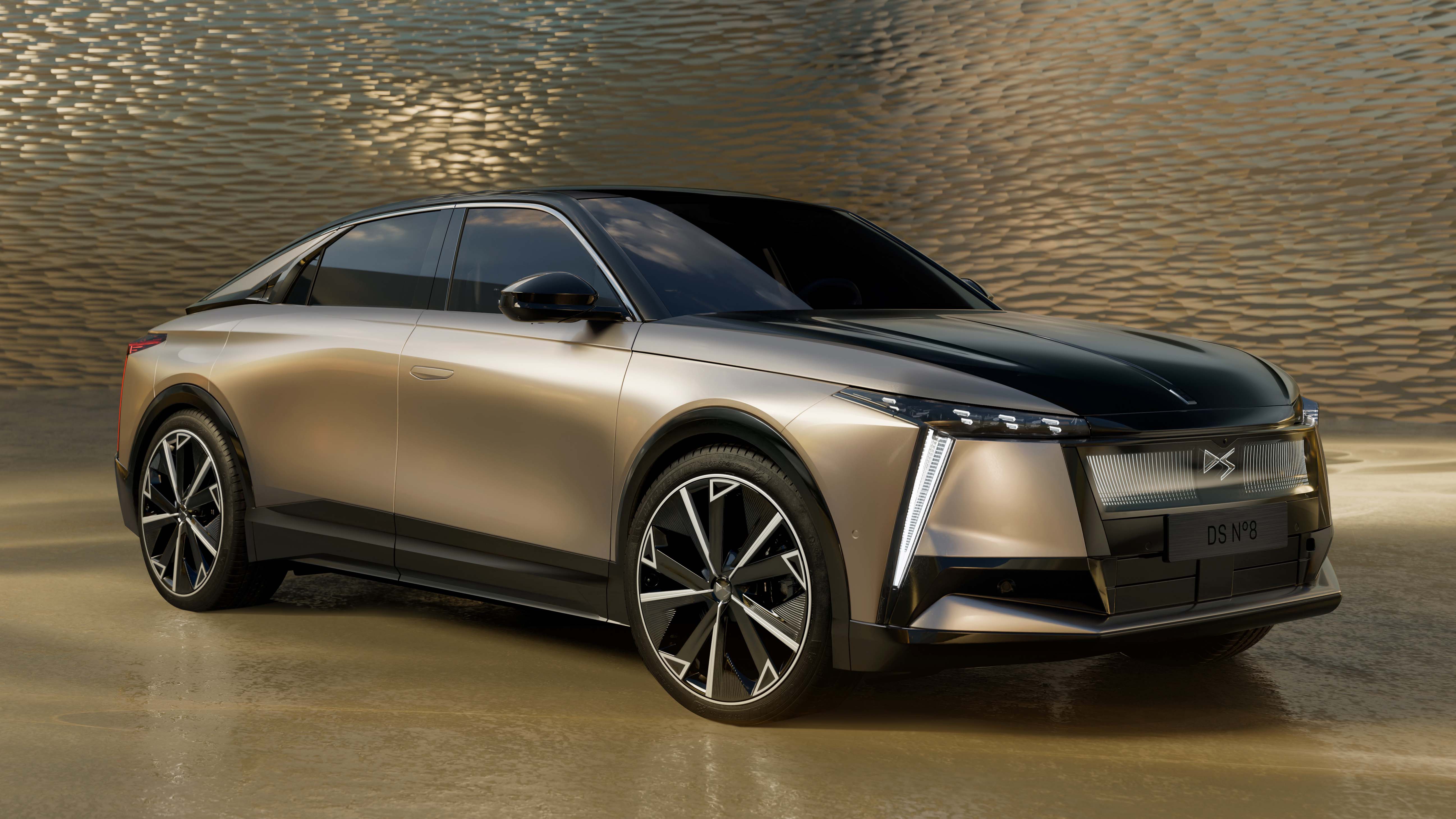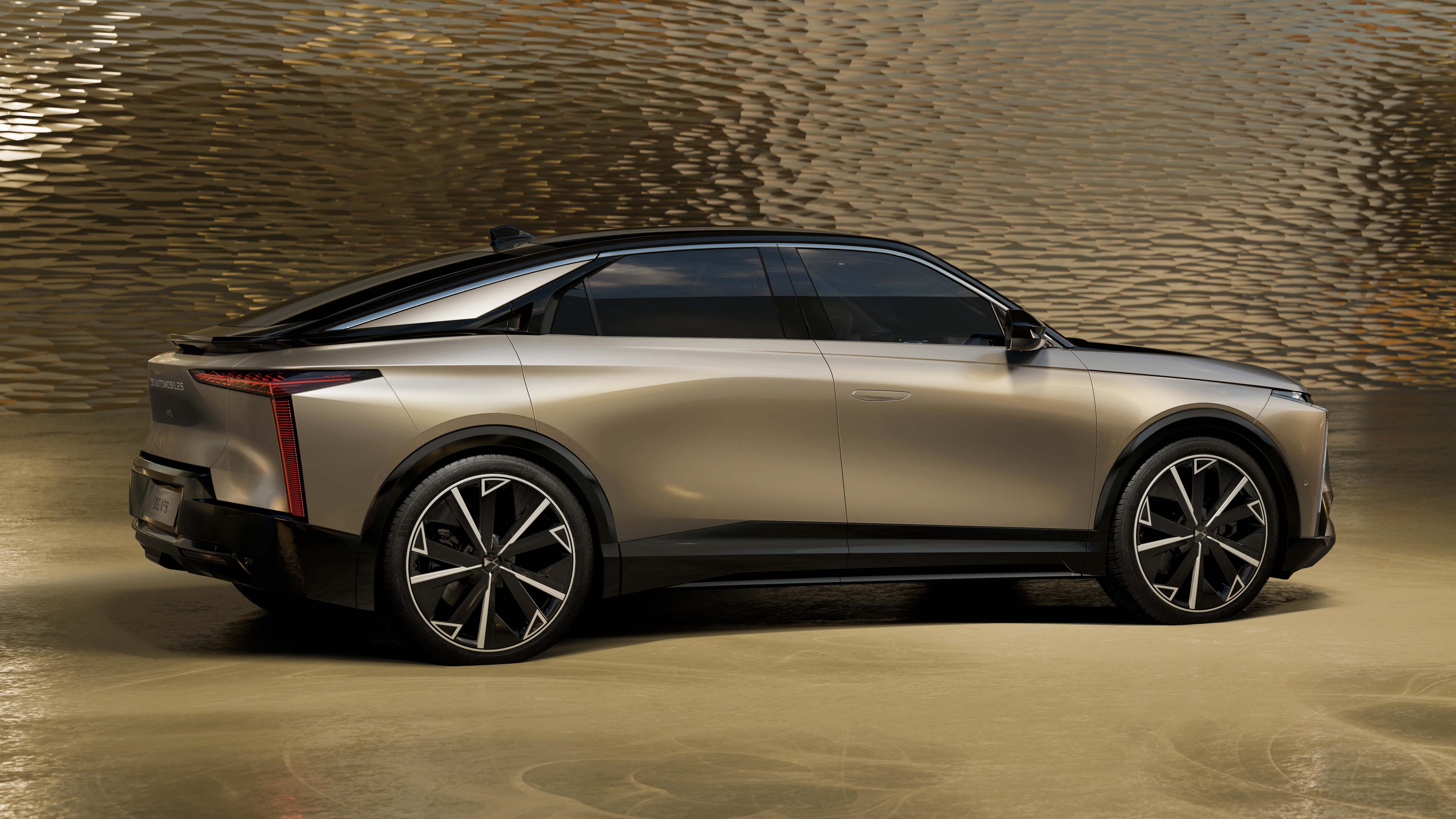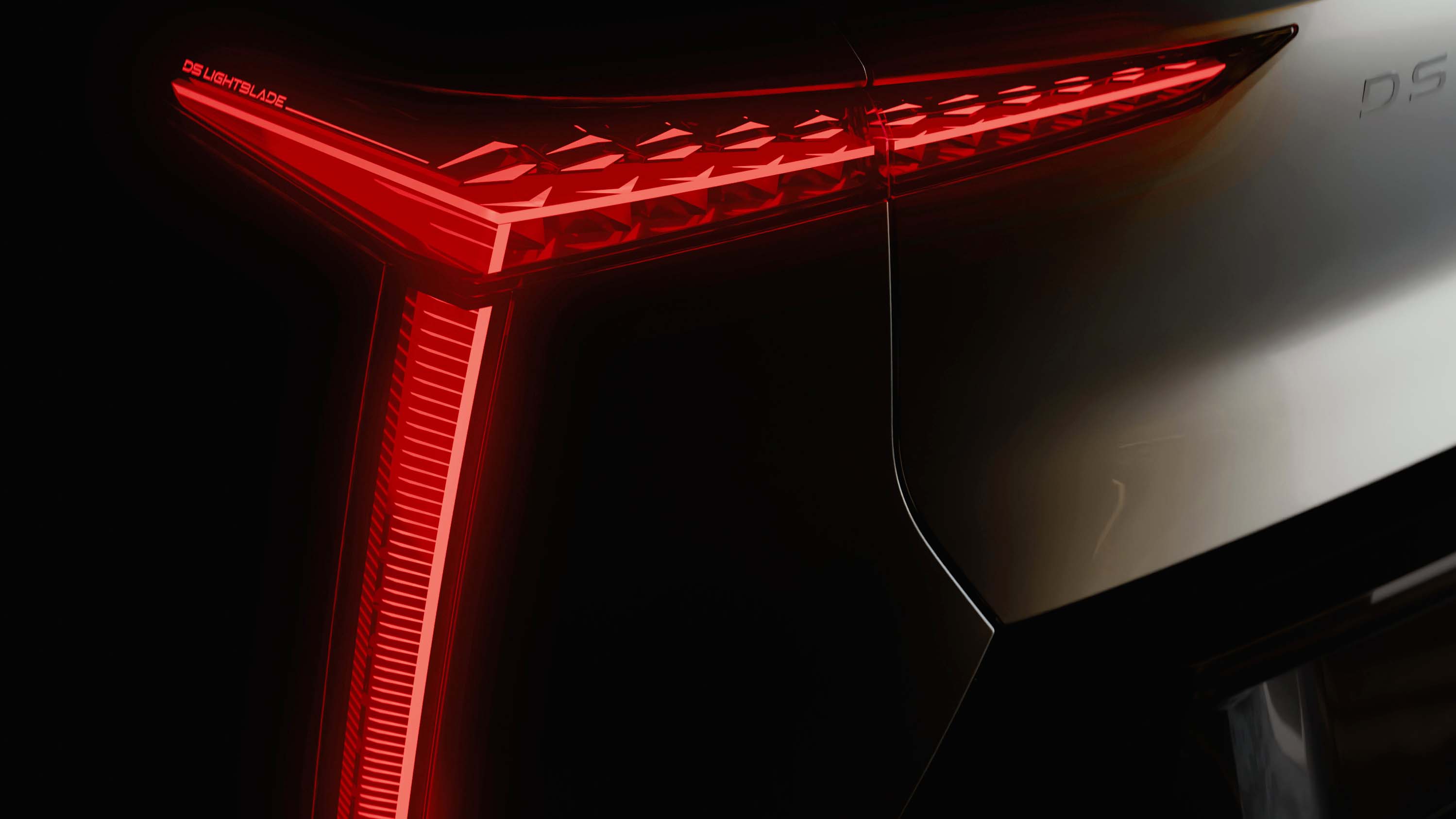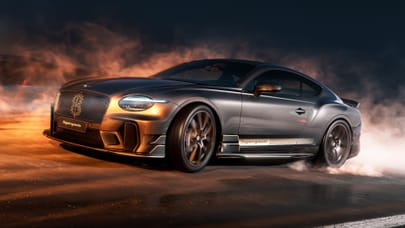
This is the DS No 8: a big French cruiser with a 469-mile electric range
DS has thrown the entire Book of Aero at its Polestar 4-esque EV. Here's what you need to know
Hello to the DS No 8. Not, please note, the DS 8 or DS Number 8 or DS Eight or DS #8. It is of course a nod to the brand's French aroma. Y'know, like Chanel No 5.
France was one of the first European countries to get long-distance fast motorways, and the original 1955 Citroen DS took full advantage. Don't think we're saying the DS No 8 is as revolutionary as the goddess was, but for autoroute cruising you could do a lot worse. It's all-electric, but extremely aerodynamic and available with a thumping great battery for a WLTP-certified range of 469 miles.
Which is actually 34 miles longer than a Peugeot e-3008 of the same electric spec, running on the same platform. That's the value of aerodynamics; it's relatively low to the ground for an EV.
The No 8 inserts itself in that chink between hatchback and crossover – to get an idea of its profile, think Polestar 4 or BMW iX2. Or if you haven't seen one of those yet, the Cupra Formentor or Peugeot 408. (An electric option is just coming on stream for the 408 but it's an old platform with a much smaller battery than the e-3008 or DS No 8.)
The No 8 was previewed, surprisingly accurately, by a concept car from 2020 called the Aero Sport Lounge. We didn't see it back then because it was completed in a tearing hurry for the Geneva show, loaded onto a truck, then immediately unloaded because Covid cancelled the show. But it was in the room today when DS showed us the finished No 8.
The Sport Lounge concept had the same fast profile, a similar illuminated representation of a 'grille', and also a two-tone colour scheme scheme as per what's an option on the No 8. The production car's bonnet is actually a world-first, with the area of black paint applied without any masking by a machine like a giant inkjet printer. The black sections on the rear pillar are plastic overlays; there's a single metal panel beneath.
DS design chief Thierry Metroz says there's nothing about the No 8's design, apart from the blanked-off grille, that advertises it as an EV. "For me it's the same brand, the same philosophy. We won't have one kind of design for EVs and one kind for combustion." Although the No 8 is launching as EV-only, if the takeup of battery cars slows down, they can make it as petrol or PHEV, just as with the Peugeot 3008.
Metroz says the car's sharp corners are actually better for aerodynamics than rounded ones, because the air goes cleanly down the side of the car and then departs neatly from the tail: "Look at WEC cars."
He lists several other measures that add range, and specifically motorway-speed range because that's where aero really comes into play. The Cd figure of 0.24 is important. But so too is the low height, reducing frontal area (the A in CdA) which is the most meaningful drag figure. For the No 8, CdA is 0.63, versus 0.75 for the taller Peugeot. That's one-sixth less aero drag, the very thing that's responsible for most of the energy use at steady high speed, and they claim 312 miles real range at a steady 75mph.
To get the result, it wasn't just about shaping the surfaces, but significantly re-proportioning the body. Versus related cars (3008, Vauxhall Grandland) the bonnet and dash are lowered by 5cm, which meant lowering the whole firewall. The roof is 6cm lower, and the rear seat is moved back.
Top Gear
Newsletter
Thank you for subscribing to our newsletter. Look out for your regular round-up of news, reviews and offers in your inbox.
Get all the latest news, reviews and exclusives, direct to your inbox.
Inside, the shapes are uncommonly angular, made out of fresh materials with interesting deco backlighting. The funky four-spoke steering wheel might look like a gimmick but turns out to be surprisingly hand-friendly. Colour choice goes way beyond the industry-standard black too. There's plenty of space and equipment – an HUD is standard in all versions, and a heat pump, and big screens. Move up the trims and you find pixel headlights and Focal hi fi.
Heated/vented seats even in the rear, and heating fans in the front headrests, provide climate control direct to peoples' bodies. That's more efficient than heating or cooling the whole cabin. The big-battery versions get adaptive damping with DS's camera-based bump prediction system. But we've never been quite convinced by that.
In numbers, you're looking at three powertrains. It starts with a 74kWh battery and front-drive for 230bhp, plus 30bhp kickdown boost, and 357 miles WLTP range. Then the 97.2kWh long-range battery with the headline 469 mile range – it's a nice round 750km, so you can only imagine the last-minute fettling to get past that benchmark. Finally there's a twin-motor job, which loses 40 miles' range but gives you a total 350bhp and 5.4sec to 62mph.
The big battery can ingest charge at 160kW all the way to 55 per cent, meaning a 20 to 80 charge in comfortably under half an hour. That battery by the way is made in a French plant that also supplies Mercedes.
Meanwhile the whole car will actually be assembled in a Stellantis Group plant in Melfi, southern Italy. Never mind, the vibe is definitely 'big French cruiser'.
Trending this week
- Car Review
BMW iX3










